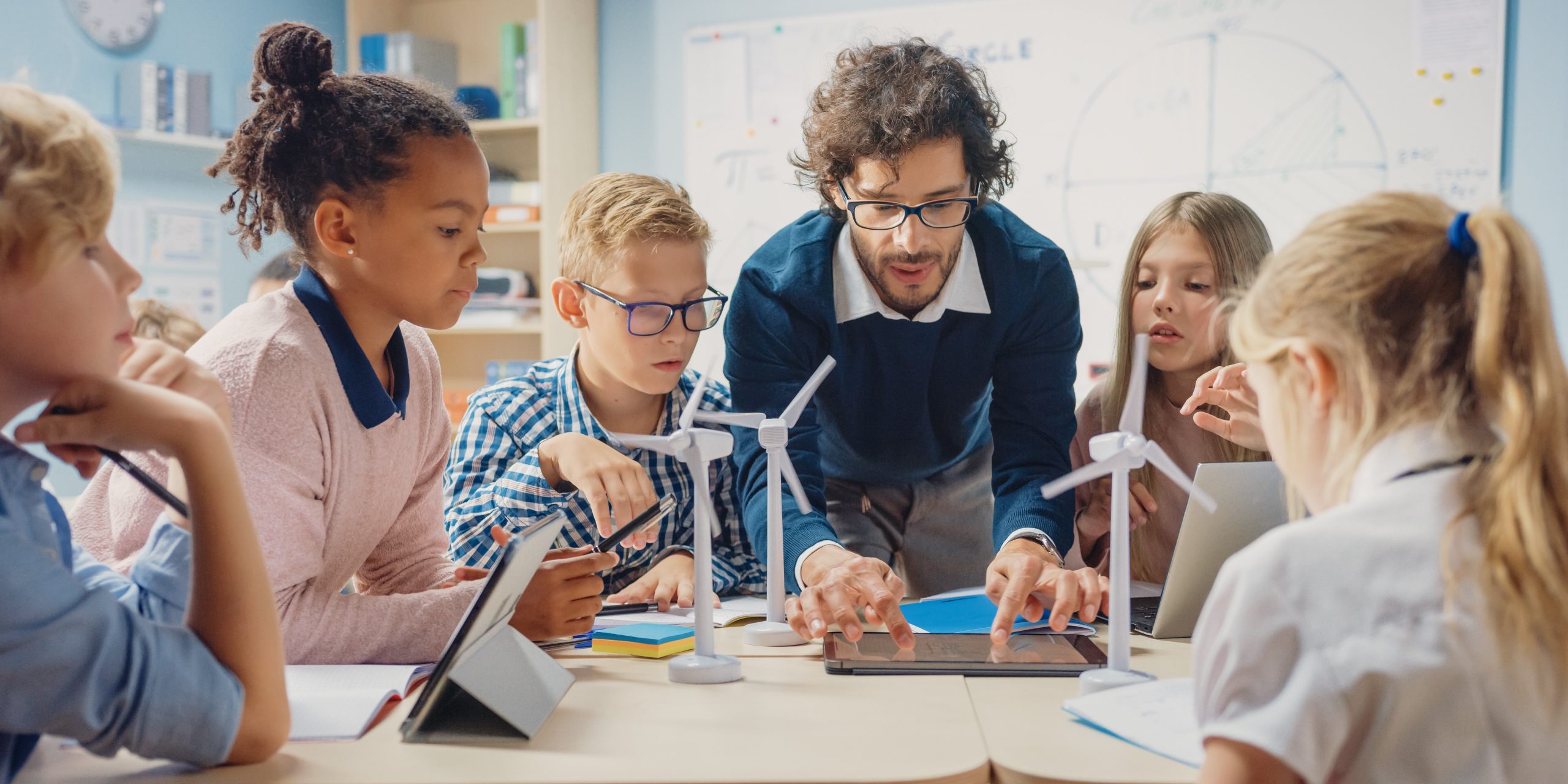Affordable Primary Science Tuition Singapore for All Learning Needs
Affordable Primary Science Tuition Singapore for All Learning Needs
Blog Article
A Comprehensive Guide to the Various Discovering Techniques in Main Science Guideline
The exploration of diverse understanding methods in main scientific research instruction provides a chance for instructors to enhance trainee involvement and understanding significantly. By checking out hands-on knowing strategies, inquiry-based strategies, and collaborative approaches, we can identify efficient practices that provide to numerous learning designs.

Hands-On Discovering Strategies
Hands-on understanding strategies play a crucial function in primary science direction, engaging students in active expedition and experimentation. These techniques enable learners to interact directly with sensations and products, promoting a much deeper understanding of clinical ideas. By utilizing manipulatives, versions, and real-life experiments, instructors develop a setting where students can observe, assume, and examine their concepts.
Such strategies not just boost understanding however likewise cultivate important reasoning and analytical skills. When students take part in tasks like developing basic devices, planting seeds, or conducting chemical responses, they are urged to ask concerns and seek responses with their own monitorings. This experiential technique assists to demystify intricate clinical principles, making them much more easily accessible and relatable.
Additionally, hands-on knowing advertises cooperation among peers, as students often operate in groups to carry out experiments or share searchings for. This team effort not only enriches their discovering experience but likewise establishes vital social skills. Inevitably, integrating hands-on methods in primary scientific research instruction cultivates a lifelong love of understanding and interest concerning the environment, laying a strong structure for future academic searches in science and past.
Inquiry-Based Learning
Inquiry-based discovering is an instructional technique that urges students to ask concerns, investigate phenomena, and create their own understanding of clinical principles. This method changes the emphasis from conventional teacher-led guideline to a more student-centered experience, where learners take the campaign in their instructional journey. By promoting inquisitiveness, inquiry-based learning promotes deeper interaction with the product, permitting students to check out subjects in a purposeful context.
In practice, this method commonly entails hands-on experiments, monitorings, and crucial thinking activities that line up very closely with the clinical approach. Pupils are encouraged to formulate hypotheses, design investigations, and evaluate data, which cultivates vital skills such as analytical and logical thinking. The duty of the instructor in this structure is to assist in expedition, assisting trainees with the query procedure while motivating independent thought and collaboration.
Moreover, inquiry-based learning supports a feeling of possession over the knowing procedure, inspiring students to pursue knowledge actively. This approach not just improves understanding of scientific concepts but additionally promotes a lifelong love for learning, outfitting pupils with the skills necessary to browse a significantly complicated world.
Collaborative Understanding Approaches
Joint learning techniques encourage trainees to take part in significant communications with peers, cultivating a shared obligation for their instructional end results. In primary science instruction, these techniques encourage learners to work together to check out clinical ideas, address problems, and perform experiments (primary science tuition Singapore). By taking part in team tasks, trainees can leverage varied viewpoints, permitting for richer understanding and retention of clinical expertise
One key aspect of collective knowing is the focus on communication abilities. Students have to articulate their ideas, pay attention actively to others, and bargain ideas, all of which are critical proficiencies in both academic and real-world contexts. This social communication not just enhances their understanding of clinical principles however also promotes team effort and conflict resolution skills.
In addition, collaborative knowing typically causes increased inspiration and involvement. When students see the value of their payments within a group, original site they are most likely to take possession of their understanding journey. Teachers can promote this process by developing organized team tasks that straighten with curriculum goals while supplying assistance on effective collaboration strategies. Generally, integrating joint discovering methods in key science guideline cultivates a vibrant discovering atmosphere that prepares pupils for future academic and social obstacles.
Technology Integration in Scientific Research
The assimilation of technology in main scientific research direction boosts learning experiences by offering ingenious devices and sources that support various mentor methods, consisting of joint learning - primary science tuition Singapore. Using electronic systems, simulations, and interactive applications allows pupils to engage deeply with scientific principles, promoting a much more hands-on strategy to knowing
Virtual laboratories, as an example, make it possible for students to carry out experiments securely and efficiently, advertising inquiry-based learning. These devices can imitate real-world clinical circumstances, permitting students to visualize complex procedures that would be challenging to duplicate in a standard classroom setting. Innovation fosters interaction and cooperation among students, as they can share searchings for and function together on projects via on the internet platforms.
Additionally, multimedia discussions and academic videos can improve lessons by accommodating varied knowing styles, making abstract concepts much more available. Information analysis devices likewise encourage trainees to collect and analyze scientific information, strengthening crucial assuming skills. On the whole, the critical have a peek at this site incorporation of technology in key science guideline not only improves engagement however also prepares trainees for a technically innovative society, outfitting them with vital abilities for future scientific ventures.
Differentiated Direction Strategies
Distinguished direction strategies are necessary for addressing the diverse requirements of students in primary science education and learning. These approaches enable teachers to customize their teaching techniques to fit differing capabilities, passions, and learning styles within the classroom. By using distinguished direction, instructors can develop a comprehensive environment that fosters engagement and improves understanding of scientific ideas.
One reliable strategy is to use flexible grouping, which allows students to collaborate with peers at similar skill levels or with varying viewpoints. This approach motivates peer understanding and promotes crucial reasoning. Furthermore, providing choices in jobs can encourage pupils, allowing them to select jobs that resonate with their passions while still satisfying curricular purposes.
Moreover, integrating tiered jobs is an additional useful method. Deliberately tasks with differing levels of complexity, educators can ensure that all trainees are suitably tested, regardless of their proficiency. Utilizing formative evaluations to evaluate comprehending more enables teachers to readjust their training methods dynamically, making sure that each learner receives the assistance they require.
Ultimately, carrying out separated direction strategies in main scientific research education and learning not only improves student knowing outcomes however likewise cultivates an enthusiasm for scientific research, preparing pupils for future academic quests.

Conclusion
In recap, reliable primary scientific research direction necessitates a diverse strategy that includes hands-on discovering, inquiry-based methods, and joint techniques. The combination of technology and distinguished guideline further provides to diverse learning styles, fostering an atmosphere conducive to expedition and crucial thinking.
The exploration of varied discovering methods in key science guideline provides an opportunity for teachers to enhance trainee interaction and comprehension considerably.Hands-on learning techniques play a critical duty in key science guideline, engaging students in energetic exploration and trial and error.Inquiry-based learning is an educational method that motivates pupils to ask questions, explore phenomena, and build more their very own understanding of scientific principles.Collective understanding techniques equip students to engage in meaningful communications with peers, cultivating a common duty for their educational results. Overall, including collective knowing strategies in main science instruction cultivates a dynamic learning atmosphere that prepares pupils for future academic and social challenges.
Report this page